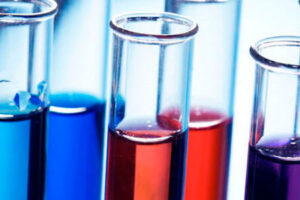Iodine is perhaps the most unsung mineral in medicine, and we do not only mean regular medicine. Also within the CAM, the value of this mineral and more importantly, the way to effectively improve the iodine status (!), Is well understood by only a relatively small group of doctors / therapists. This is unfortunate, because the therapeutic potential of this mineral is enormous, provided it is used correctly.
There are many and persistent misunderstandings about the use of this essential mineral in circulation, misunderstandings that have to do with lack of thorough knowledge about the functioning and thus the therapeutic use of this mineral. One of the most common mistakes surrounding the intake of extra iodine in higher doses, and perhaps the most important source for all wild-west stories about this mineral, is the omission of necessary co-factors during the use of extra iodine.
A practical example:
A man begins, without expert supervision, with the intake of increasing doses of iodine (the correct form: combination of elemental iodine and iodide) because he recognizes in literature a lot of symptoms associated with an iodine deficiency. He builds up fairly quickly to a dose of 25 mg per day. Several co-factors are taken at the same time, but due to concerns about the alleged toxicity of higher doses of selenium, the intake of these will remain at max. 50 mcg. extra per day.
Initially he felt good at this, less “brainfog” and no longer suffer from allergic asthma and hay fever. However, he developed palpitations within 6 months. Because he thought of detox phenomena, the dosage of iodine was then reduced and interrupted in the weekends. Complaints were less but within 1-2 months he began to lose weight and within a few months the weight decreased by 7 kg while no less was eaten.
The GP was visited and found the following blood values: TSH <0.01 and fT4 = 60. Conclusion: hyperthyroidism. You are referred to an internist. A week later the blood test again: TSH <0.01, fT3 = 13, fT4 = 45, antiTPO = 19.
The man suffered from burning eyes, clearly felt badly and had a heart rate of 120 bpm for which he is prescribed a beta-blocker.
Provisional diagnosis internist: Graves’ disease. The man the gets a thyroid scintigram. This was however not feasible because the thyroid did not take up radioactive iodine because of a presumed satiety with iodine due to the intake of the high doses. The nuclear physician noted that the hyperthyroidism was provoked by the high iodine use. The internist had already noticed that she thought that we would get enough iodine in the Netherlands.
So far the case description.
We are dealing here with the consequences of an incompetent use of high doses of iodine and not with a logical consequence of extra iodine use as such. Nevertheless, these types of cases confirm the already existing misunderstanding in medicine.
The cause of this problem is the structurally low selenium intake during the period of iodine use. In this type of dosing of an iodine complex, simultaneous dosing of an organic selenium preparation of between 200 mcg and 400 may be necessary. Taking extra selenium (at least 200 mcg / day) and temporarily stopping iodine has restored the problems (and blood values) of this man. Although the physiology of the thyroid gland is basic knowledge, the internist noted that he has never heard or read that selenium is so important for the thyroid gland.
We will explain the background to this in the next newsletter.




